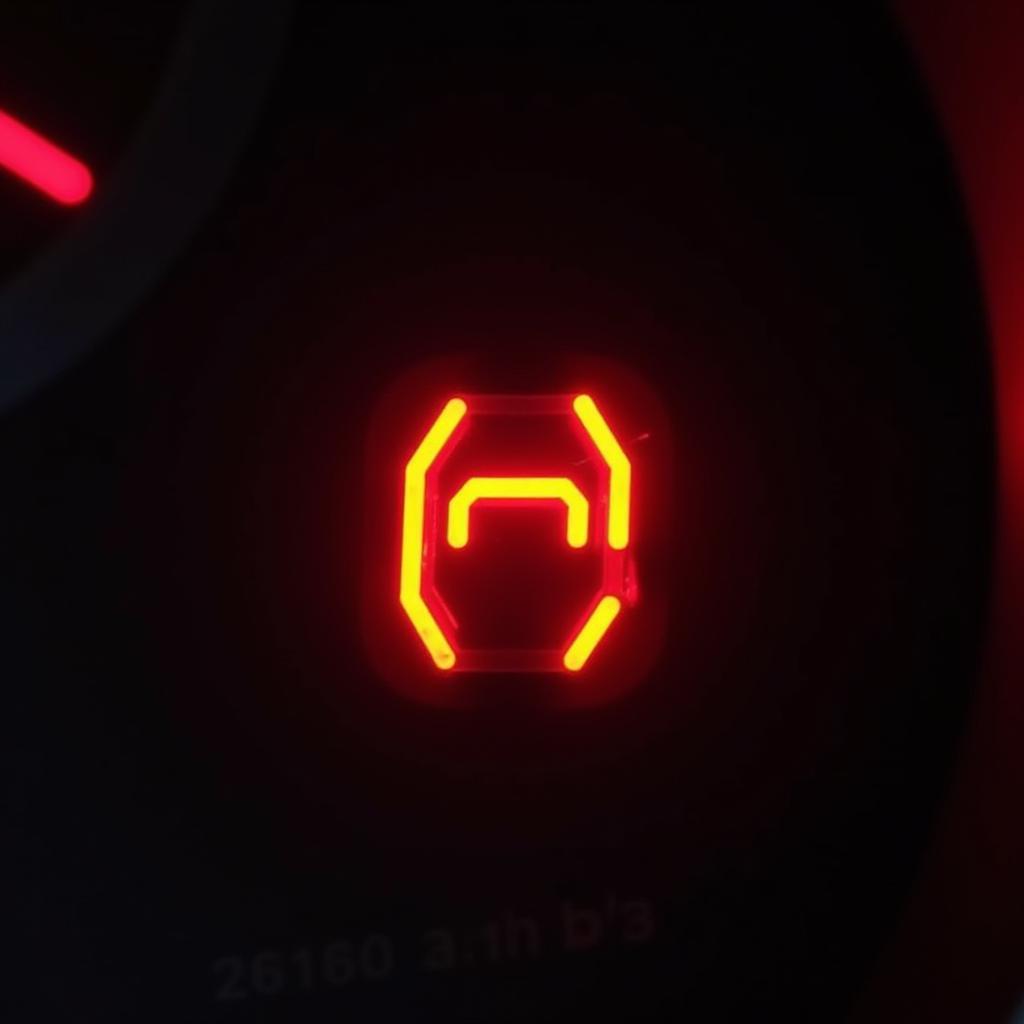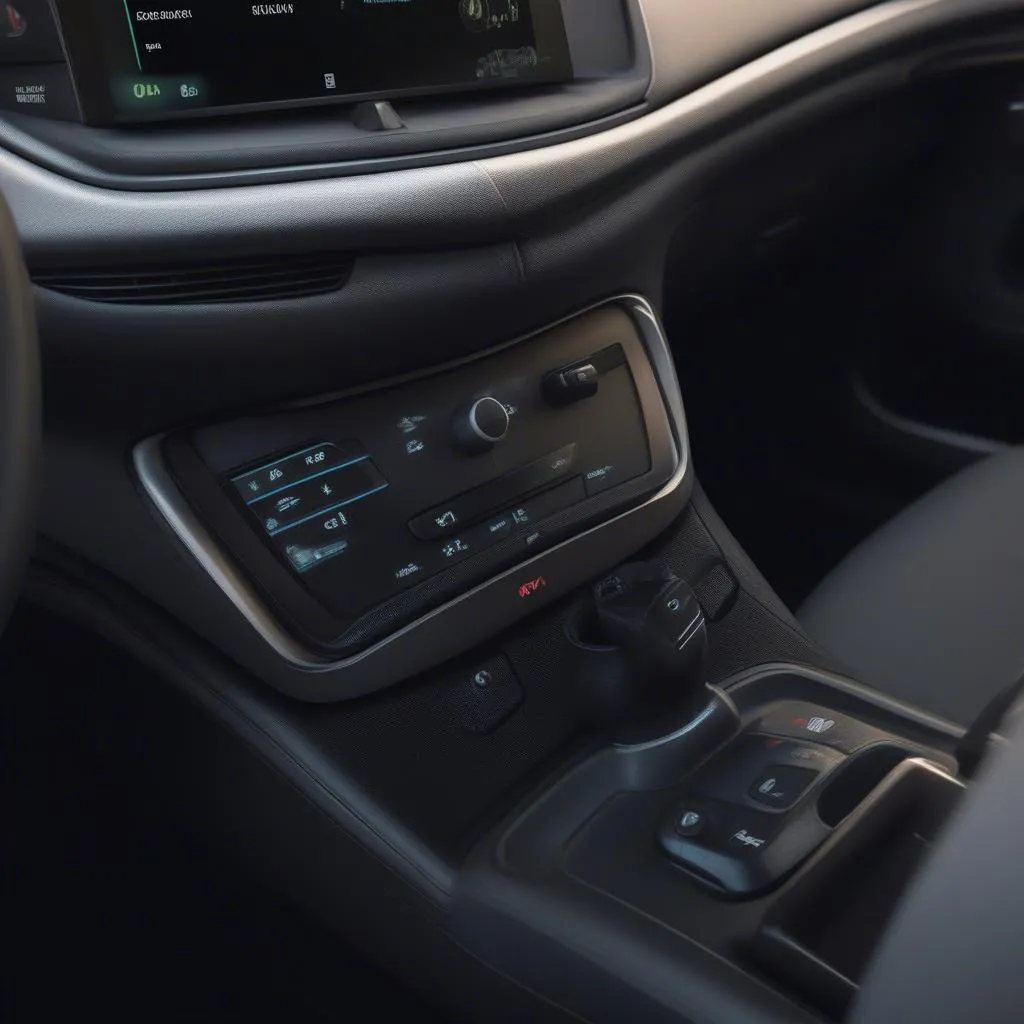Brake warning lights are crucial indicators of potential issues within your braking system. Understanding their meaning can help you address problems promptly, ensuring your safety and preventing costly repairs. This article provides a comprehensive guide to brake warning light definitions, covering various types, causes, and troubleshooting tips. See our guide to brake warning system definition for more details.
Decoding the Different Brake Warning Lights
Several different brake warning lights can illuminate on your dashboard, each conveying a specific message. These lights vary in color and symbol, and recognizing their distinct meanings is paramount.
-
Red Brake Warning Light: This light typically signifies a serious problem, such as low brake fluid, a malfunctioning ABS system, or a critical brake component failure. Ignoring this warning can lead to brake failure and a dangerous driving situation.
-
Yellow/Amber Brake Warning Light: This light usually indicates an issue with the anti-lock braking system (ABS). While your conventional brakes might still function, the ABS might not engage in emergency situations, potentially increasing stopping distance.
-
Parking Brake Light: While not directly related to the braking system’s performance, this light reminds you that your parking brake is engaged. Driving with the parking brake on can damage your brakes and reduce fuel efficiency. You might also want to check out this article about front collision warning brake error.
 Red brake warning light illuminated on car dashboard
Red brake warning light illuminated on car dashboard
Common Causes of Brake Warning Lights
Several factors can trigger brake warning lights, ranging from simple issues to complex mechanical failures.
-
Low Brake Fluid: One of the most common culprits is low brake fluid. This can result from leaks in the brake lines, worn brake pads, or other issues within the hydraulic system.
-
Worn Brake Pads: Brake pads wear down over time, eventually triggering a sensor that activates the brake warning light. Replacing worn brake pads is a routine maintenance task crucial for safe braking.
-
ABS Malfunction: A malfunctioning ABS system can trigger a yellow/amber brake warning light. This could be due to a faulty sensor, pump, or other components within the ABS module.
-
Parking Brake Engaged: The parking brake light illuminates when the parking brake is engaged. This is a reminder to disengage the brake before driving.
Troubleshooting Brake Warning Lights
If a brake warning light appears, taking prompt action is crucial. Here are some steps you can take:
-
Check the Parking Brake: Ensure the parking brake is fully disengaged. If the light persists, move to the next step.
-
Inspect Brake Fluid Level: Check the brake fluid reservoir and top it off if necessary. Consult your vehicle’s owner’s manual for the correct type of brake fluid. This resource on brake warning light turns off when braking may be helpful.
-
Check for Leaks: Inspect the brake lines and other components for any signs of leaks. Leaking brake fluid can significantly compromise braking performance.
-
Consult a Professional: If the warning light persists or you suspect a more serious issue, consult a qualified mechanic immediately. Don’t attempt to diagnose or repair complex brake system problems yourself.
Expert Insights on Brake Warning Lights
“Ignoring a brake warning light can be extremely dangerous,” says John Smith, a seasoned automotive engineer at a leading car manufacturer. “It’s always best to err on the side of caution and have a qualified mechanic inspect your braking system as soon as possible.”
“Regular brake system maintenance is key to preventing many of the issues that trigger warning lights,” adds Jane Doe, a certified automotive technician with over 20 years of experience. “Regular brake inspections and fluid changes can help ensure optimal braking performance and safety.” This information on seat leon yellow warning light can be helpful as well.
Conclusion
Understanding brake warning light definitions is crucial for maintaining a safe and reliable vehicle. By recognizing the different types of warning lights and their potential causes, you can take appropriate action and prevent serious problems. Never ignore a brake warning light, as it could indicate a potentially dangerous situation. Address any issues promptly by consulting a qualified mechanic for diagnosis and repair. Remember, a well-maintained braking system is essential for your safety and the safety of others on the road.
FAQ
-
What does a red brake warning light mean? A red brake warning light indicates a serious problem, such as low brake fluid or a critical brake component failure.
-
What does a yellow/amber brake warning light mean? This light usually signals an issue with the ABS system.
-
Can I drive with the parking brake light on? Driving with the parking brake engaged can damage your brakes and reduce fuel efficiency.
-
What should I do if my brake warning light comes on? Check the parking brake, brake fluid level, and look for leaks. If the problem persists, consult a mechanic.
-
How often should I have my brakes inspected? Consult your vehicle’s owner’s manual for recommended brake inspection intervals.
-
What is the importance of maintaining my brake system? Regular maintenance ensures optimal braking performance and safety, preventing potential problems.
-
What are some common causes of brake warning lights? Low brake fluid, worn brake pads, and ABS malfunctions are common causes.

